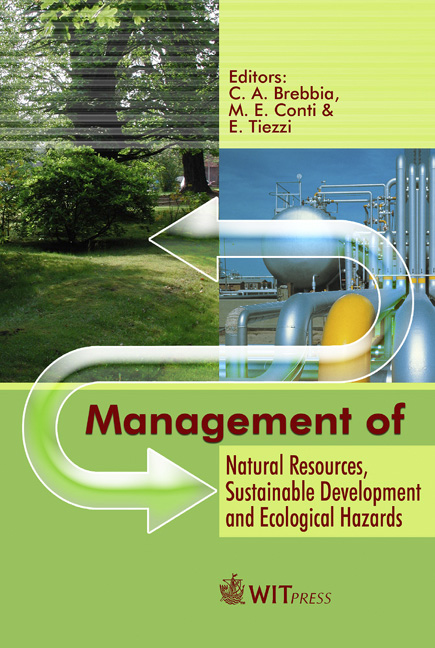Soil Contamination And Land Subsidence Raise Concern In The Venice Watershed, Italy
Price
Free (open access)
Transaction
Volume
99
Pages
10
Published
2006
Size
3,297 kb
Paper DOI
10.2495/RAV060671
Copyright
WIT Press
Author(s)
L. Carbognin, G. Gambolati, M. Putti, F. Rizzetto, P. Teatini & L. Tosi
Abstract
The southern catchment of the Venice watershed is threatened by shallow aquifer salinization and anthropogenic land subsidence due primarily to the microbial oxidation of organic soils that outcrop in the coastal farmland reclaimed from the Adriatic Sea over the last century. Recent hydrogeological and geophysical surveys provide documentary evidence that saltwater intrusion may extend inshore up to 20 km away from the Adriatic coastline with the contaminant plume from near ground surface down to 100 m depth in some areas. The actual salt distribution is the outcome of a number of factors, including the ground elevation markedly below the mean sea level (down to -4 m locally), the seawater encroachment along the final 10-15 km of the regional watercourses (Brenta, Bacchiglione, Adige, Gorzone), and the drainage practices implemented in the reclaimed area. The fresh-salt water interface is generally between 2 and 30 m deep and exhibits a pronounced seasonal variation. At the same time an ongoing settlement due to peat oxidation promoted by farming activities is observed in most of the area south of the Venice Lagoon that was reclaimed from 1892 to 1967 and is rich in organic matter. Overall land subsidence over the last 70 years ranges between 1.5-2 m and is still in progress at a rate of 1.5-2 cm/y. As a major result a large fraction of the reclaimed land lies below the mean sea level with an increasing exposure to flooding during severe winter storms and saltwater intrusion from the Adriatic Sea, the nearby Venice Lagoon, and the river beds that locally lie above the surrounding ground surface. To mitigate both hazards the implementation of a drainage strategy of the reclaimed area intended to maintain the water table as high as possible would be required. This could decelerate the peat oxidation (hence the related land subsidence) and oppose the inland subsurface salt convection and dispersion. Moreover the design of mobile gates at a few river mouths (e.g. the Brenta river) could create an effective barrier against the seawater migration upstream the watercourses in the hottest and driest summers. Keywords: saltwater intrusion, land subsidence, peat oxidation, soil salinization.
Keywords
saltwater intrusion, land subsidence, peat oxidation, soil salinization.





